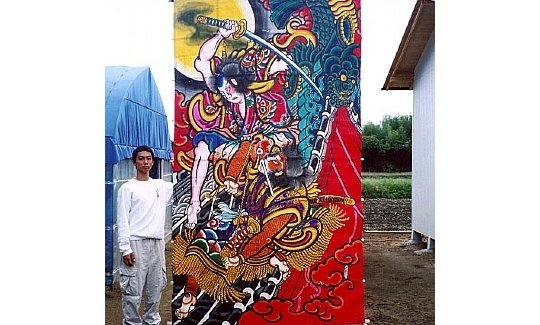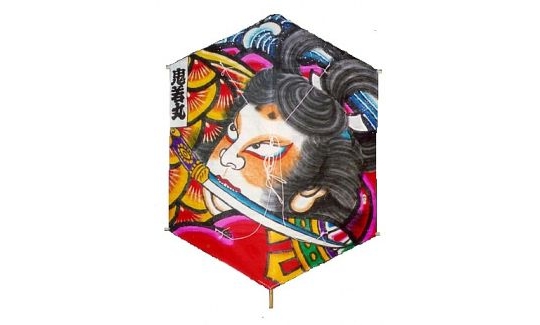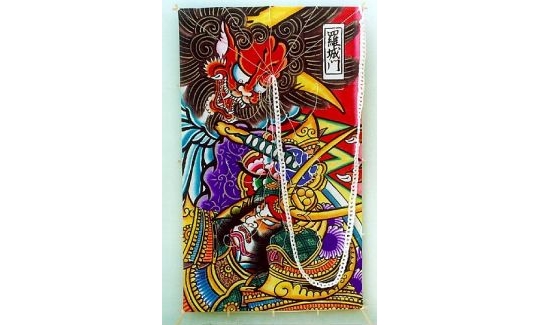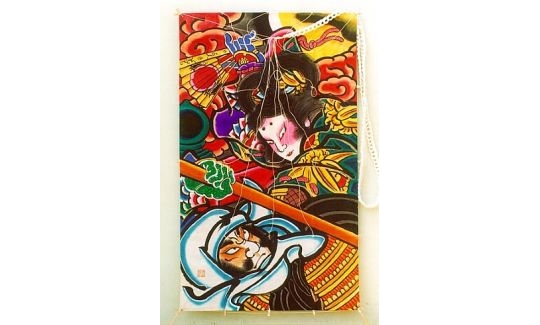Mikio Toki, who was born in 1950, studied graphic design at the University of Design in Tokyo. He learned the art of the kite from the artist Katsuhisa Ota (1902-1989), and he has been making traditional Edo kites since 1970. Toki is a member of the Kite Association of Japan, of the Company for the Preservation of the Edo Kite, and of the Association of Edogawa Kites. In accordance with Edo tradition, his kites are decorated with representations of warriors, kabuki actors, or nishiki-e drawings influenced by the woodblock colour prints, the Ukiyo-e.
Over the years, his kites have participated in many exhibitions, including one in the Kite Museum of the Japanese Kite Association, and another in Hakodate in Hokkaido. In 1994 one of his kites was exhibited at the Smithsonian Museum in Washington, and in 1995 his kites were displayed at the Tabako to Shio Museum in Shibuya, Tokyo (Tobacco & Salt Museum), and in the Uchinada Museum in Ishikawa. They are also on display at shopping centres, hotels, at the premises of large companies, and in public gardens on New Year's Eve, and have even appeared in Japanese films.
Toki is involved in education. He teaches, in Japanese schools and abroad, how to make kites. The Edogawa Association has an annual meeting at which the children are given materials for constructing kites to assemble and fly. "The joy of flying a kite you have made yourself is just as great for adults as for children" says Toki. In 1975 he took a team of children to the "train-kite" championships. He participates in kite-flying contests in Japan and abroad. In 1995 he took part in a kite festival at Disneyland in Orlando, Florida, exhibiting Edo kites and demonstrating how to build and fly them.
"At first I created Edo kites by trial and error" says Toki. "But what really helped me was watching other artists preparing them. I took note of everything they did. Making a kite begins with selecting the bamboo. I select three-year old green bamboo, and store it for two years to dry it out. Sometimes I find bamboo from old Japanese houses. Bamboo like this can be two hundred and fifty years old, and is a smokey-brown colour from hanging over the open fire embedded in the floor of a room. Then I cut it to the size I want. If the kite is to be very large, forged fittings are needed, and they also have to be made by hand. For the small kites the bamboo is encased in paper and glued to the kite for strength. A kite of one to two metres takes a month to prepare. Obviously the artist does the painting himself. First I sketch the outline in pencil or black ink, and then it is filled in with textile dyes. Sometimes I spray powdered silver onto the painting, sometimes I have to repaint it several times, My favourite subjects, the favourites of Edo-kite artists, are mostly kabuki actors, or derivations from the coloured woodblock prints."
"I love to watch things in the air" says Toki, and continues to fly his traditional kites in the skies of modern Japan.




